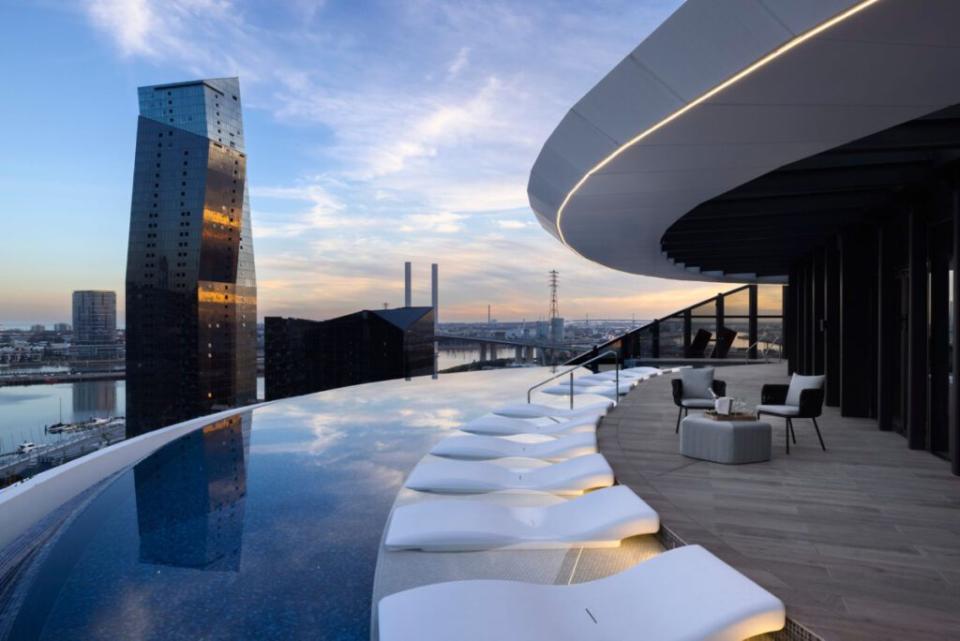Marriott Sees Strong Growth in Revenue and Hotel Development in 2023

Marriott International‘s executives reported strong revenue growth in the third quarter on Thursday. They forecasted a steady pace of revenue expansion that would return it to its historical 10-year average after the pandemic disruption.
Revenue-per-available room, or RevPAR, is a key industry metric. In the third quarter, Marriott’s third-quarter comparable systemwide constant dollar RevPAR rose 4.3% in the U.S. and Canada and soared 21.8% in international markets compared to a year ago.
“Both occupancy and rate contributed to global RevPAR gains in the third quarter, and cross‐border travel continued to rise,” said president and CEO Anthony Capuano.
Executives said they expected the hotelier’s revenue per available room to grow between now and 2025 at a pace of between 3% and 6% a year.
“Interestingly, that growth guidance is higher than the 3-year growth rate of between 1% and 3% that Marriott gave in 2019, despite the current macroeconomic concerns,” wrote UBS analyst Robin Farley in a pre-earnings report. “But Marriott points to further revenue per available room growth due to recovery in the Asia Pacific region and lower global supply growth compared to 2019.”
“Investors may not fully embrace a RevPAR outlook with no room for recession in it,” Farley noted.
Yet data released on Wednesday for the U.S., Marriott’s most significant market, showed that America is booming economically — with no recession in sight. The Bethesda, Maryland-based company — which runs brands ranging from The Ritz-Carlton to City Express by Marriott — expected a strong quarter ahead thanks to stable trends in demand.
“We’ve got basic strong fundamentals [in U.S. and Canada], such as low supply growth,” said Kathleen Oberg, chief financial officer, during an earnings call. “We do expect another year of strong growth in corporate rate … and in our group bookings pace with both strong room growth and rate growth in the U.S. … and in luxury property performance was above 2% year-over-year.”
Marriott’s Hotel Pipeline Growth
Net room growth is a metric important to the company as it wants to fill out its footprint worldwide more quickly than rival hotel groups.
“We raised the band for growth for net rooms growth in 2023,” Oberg said. “We feel good about guiding to 5 to 5.5% net rooms compound average annual growth over 2023 to 2025.”
“Through the first three quarters of 2023, we’ve signed more than 100,000 organic rooms, including the MGM Resorts International deal — an impressive 60% increase compared to the same period last year,” Capuano said. “Even with 5% net rooms growth in the last four quarters, our development pipeline continues to grow.”
As of September 30, Marriott’s worldwide hotel development pipeline totaled roughly 3,000 properties with 516,700 rooms subject to signed contracts.
Approximately 238,000 rooms in the pipeline were under construction.
Solid Quarter for Marriott
Net income totaled $752 million, up 19% year-over-year.
Adjusted earnings before interest, taxes, depreciation, and amortization (EBITDA) totaled $1,142 million, up nearly 16% from a year ago.
The shutdown of hotels in West Maui led to a loss of $10 million in management fees from Marriott-branded hotels on the island in the quarter.
Fee Forecast
Generating fees from owners through management and franchise contracts is critical to Marriott’s model.
“Marriott says they have the highest global fee revenue per room at $2,745, $100 higher than Hyatt, and $350 higher than Hilton, followed by IHG and Accor,” Farley noted about company presentations.
Keeping distribution costs under control is another factor in the company’s algorithm for growth.
Marriott said 73% of its bookings come from direct channels — 31% via the property itself, 38% from its direct digital channels, and 4% from call centers), with online travel agencies accounting for another 12%, and the global distribution systems Amadeus, Sabre, and Travelport contributing the remaining 15%.
Accommodations Sector Stock Index Performance Year-to-Date
What am I looking at? The performance of hotels and short-term rental sector stocks within the ST200. The index includes companies publicly traded across global markets, including international and regional hotel brands, hotel REITs, hotel management companies, alternative accommodations, and timeshares.
The Skift Travel 200 (ST200) combines the financial performance of nearly 200 travel companies worth more than a trillion dollars into a single number. See more hotels and short-term rental financial sector performance.
Read the full methodology behind the Skift Travel 200.
Get breaking travel news and exclusive hotel, airline, and tourism research and insights at Skift.com.

 Yahoo Finance
Yahoo Finance 